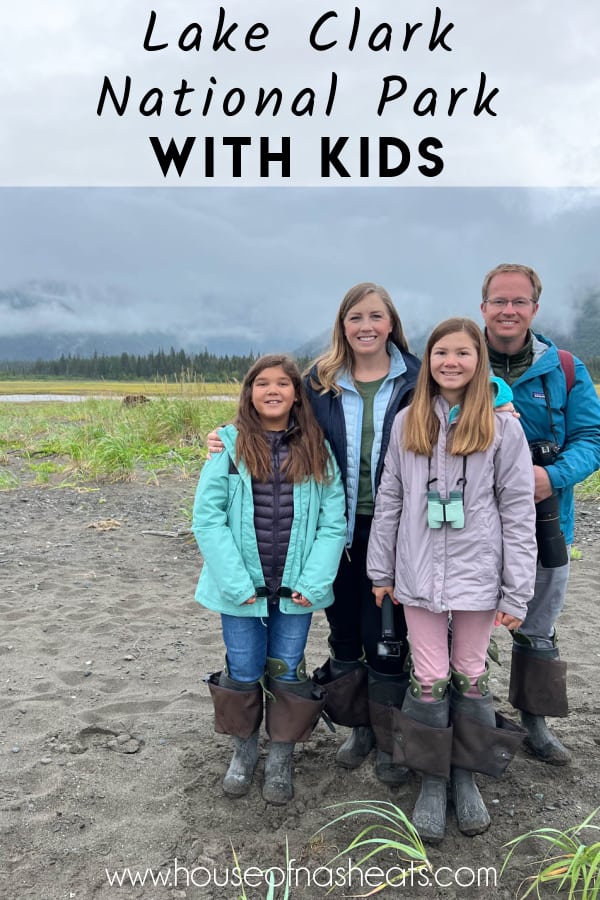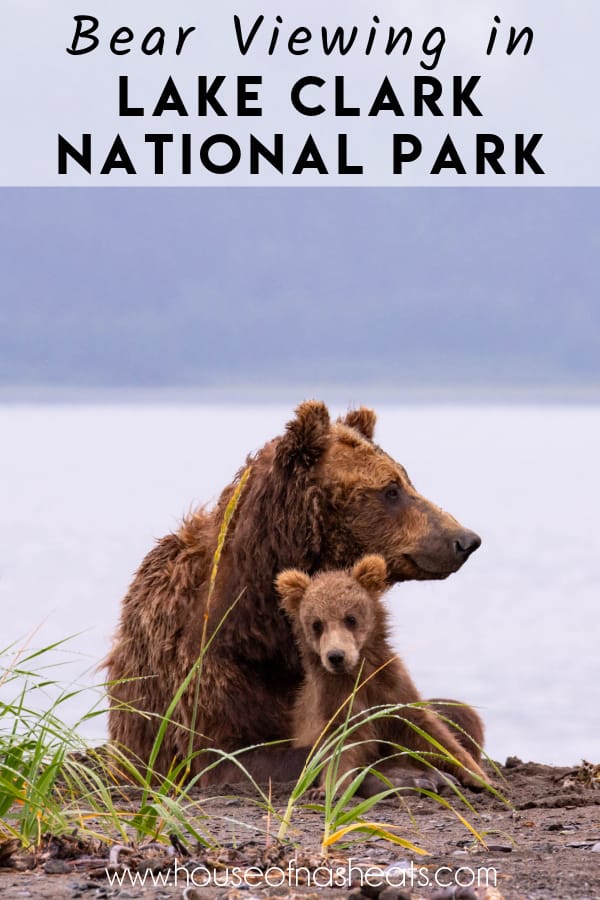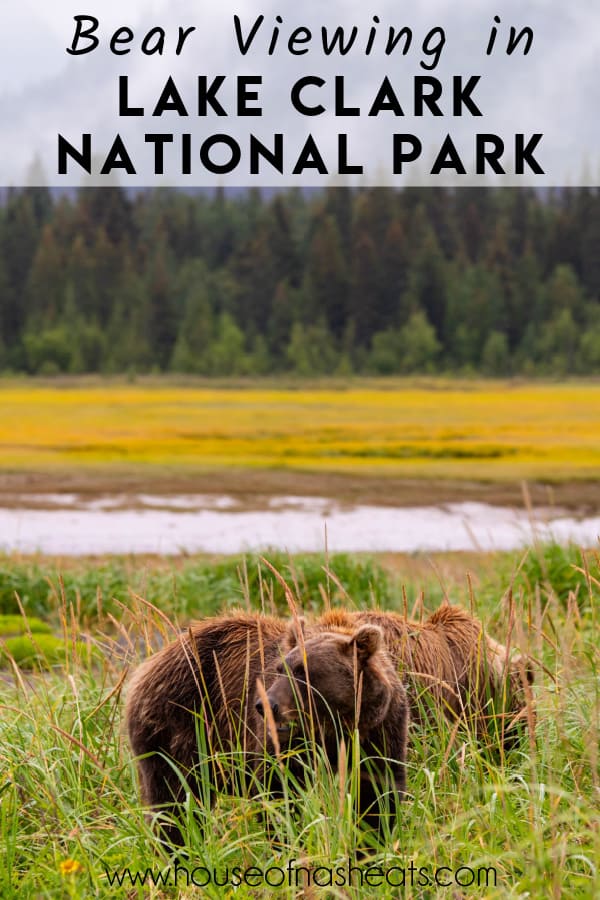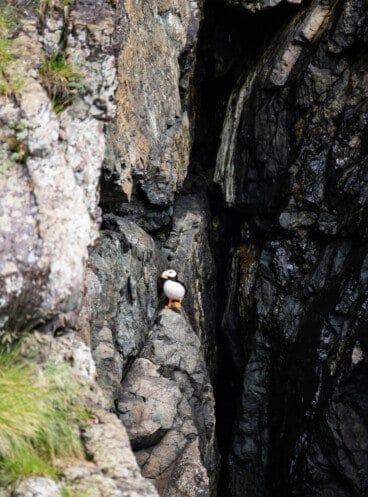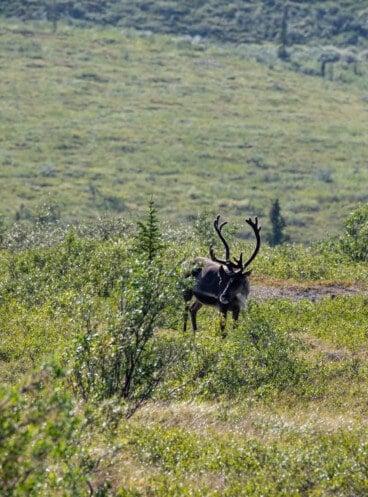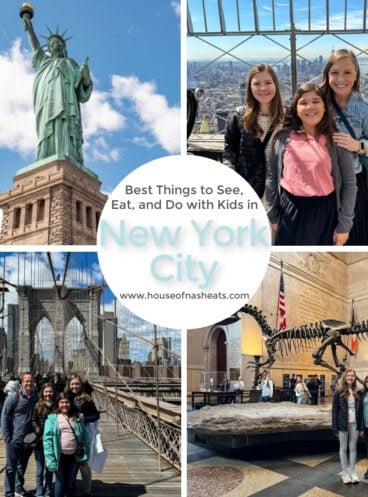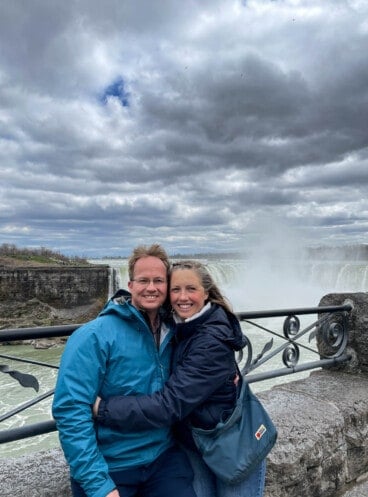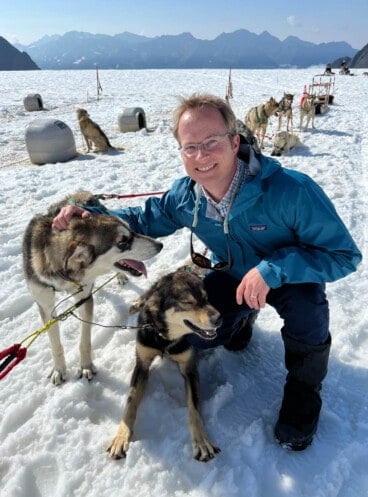If you are planning an epic Alaska adventure, bear viewing in the wild just might be at the top of your list! Seeing mother grizzly bears with their cubs in their natural environment is a once-in-a-lifetime experience in one of the most beautiful places on earth that is both moving and awe-inspiring.

Table of Contents
- Visiting Lake Clark National Park
- What You Can Expect to See
- What kind of bears are in Lake Clark National Park?
- How much does it cost to go bear viewing in Alaska?
- What should I bring?
- Other gear to consider bringing:
- Where can you see bears in Alaska?
- Katmai National Park
- When is the best time to go to see bears in Alaska?
- Is it safe?
- Can you stay overnight in Lake Clark National Park?
- Where is the Lake Clark Visitor Center?
- Other Things to Know
- Other Activities in Lake Clark National Park
- More Alaska Travel Posts
When I was planning our trip to Alaska with kids, one of the first things I knew I wanted to see were bears. They are so majestic and wild and what better place is there to see them so relatively up close and personal?
I underestimated just how personal that experience would get since we had a number of bears meander closer to our group while we stood there watching them from a relatively safe distance. This was easily the highlight of our Alaska family vacation for me, even though my husband would say he liked fishing for salmon on the Kenai River best, and both our girls would gush about dogsledding on a glacier as their favorite activity.
It was easily the most expensive excursion we did, but one that I think is well worth it if you want an unforgettable experience being around some of the most amazing creatures on earth. Fair warning that this post is more photo heavy than most because I had an impossible time narrowing down some of my favorite images of one these mighty animals.
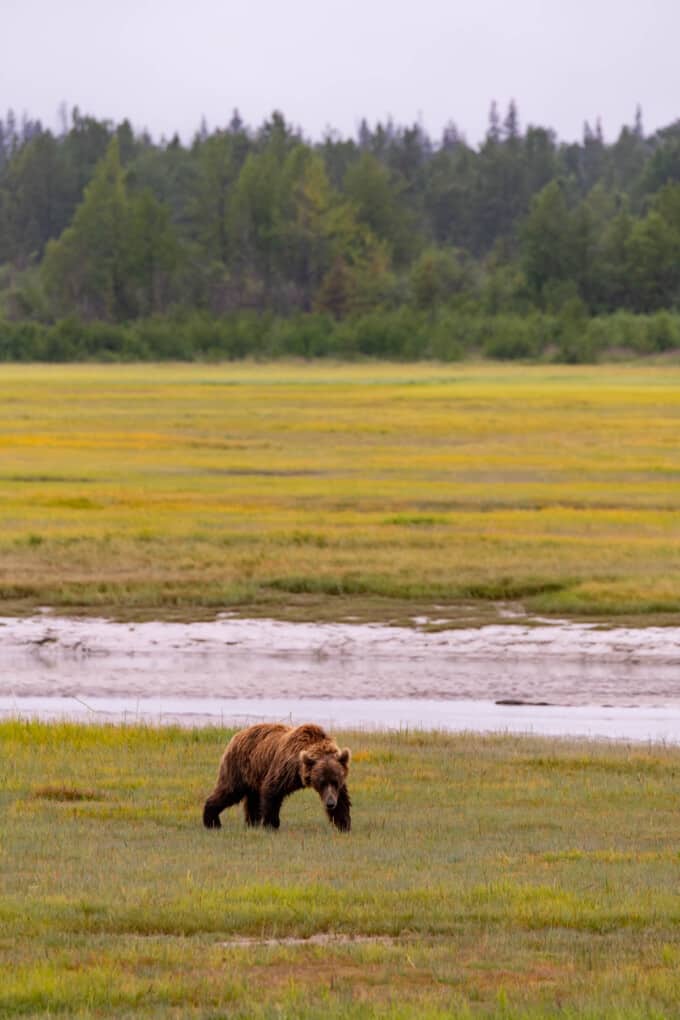

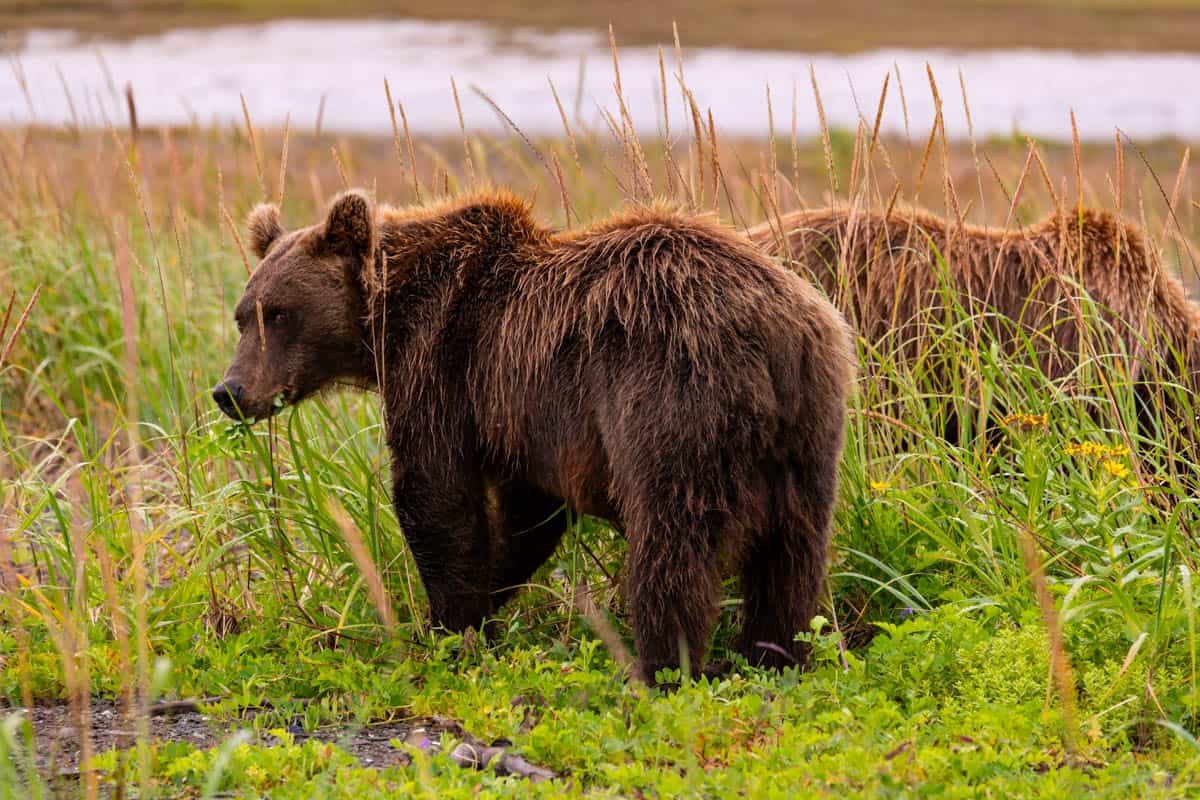
Visiting Lake Clark National Park
Alaska has 8 national parks (only California has more with 9) and they are some of the least visited in the national parks system. When our family visited Alaska during the tail end of July and early August, we were fortunate enough to visit 3 of Alaska's national parks and Lake Clark National Park was one of them.
But our visit almost got cancelled. We got a phone call the day before from our tour operator letting us know that because of bad weather and poor visibility it was highly likely that they would have to cancel our flight. Even the morning of it was touch and go. We arrived at 7:00am only to be told that they still weren't sure whether we would make it and that there was a chance that we could take off, fly over to the park, possibly even land, but have to immediately take off again to do the return journey before the weather socked us in.
They said that if we chose to go ahead and were able to land, even if it was only for five minutes and we didn't see any bears, we would be charged for the full trip. But that if we got over there and couldn't land at all then the full cost of the flight would be refunded.
Ultimately we decided to just risk it and hope for the best and we got really lucky that we were able to spend a full 3 hours on the beach with the bears. But our pilot told us that they had needed to cancel multiple flights that week because of weather, which can be unpredictable in Alaska even during the summer season.

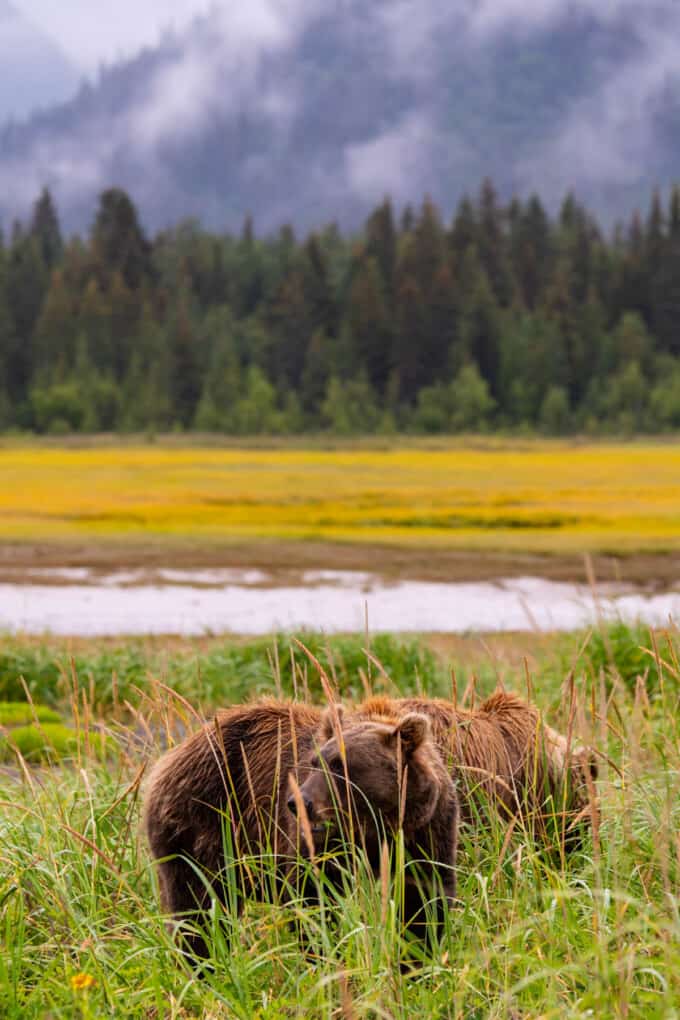
How do you get to Lake Clark National Park?
One of the reasons this is one of the least visited national parks is that it is remote and only accessible by boat or by air. There are no roads in or out of Lake Clark National Park so it's not possible to drive there by car.
Lake Clark is roughly 100 miles southwest of Anchorage. The best way to get there is by plane or by boat from Homer, Alaska, although you can also catch flights from Anchorage or Soldotna as well.
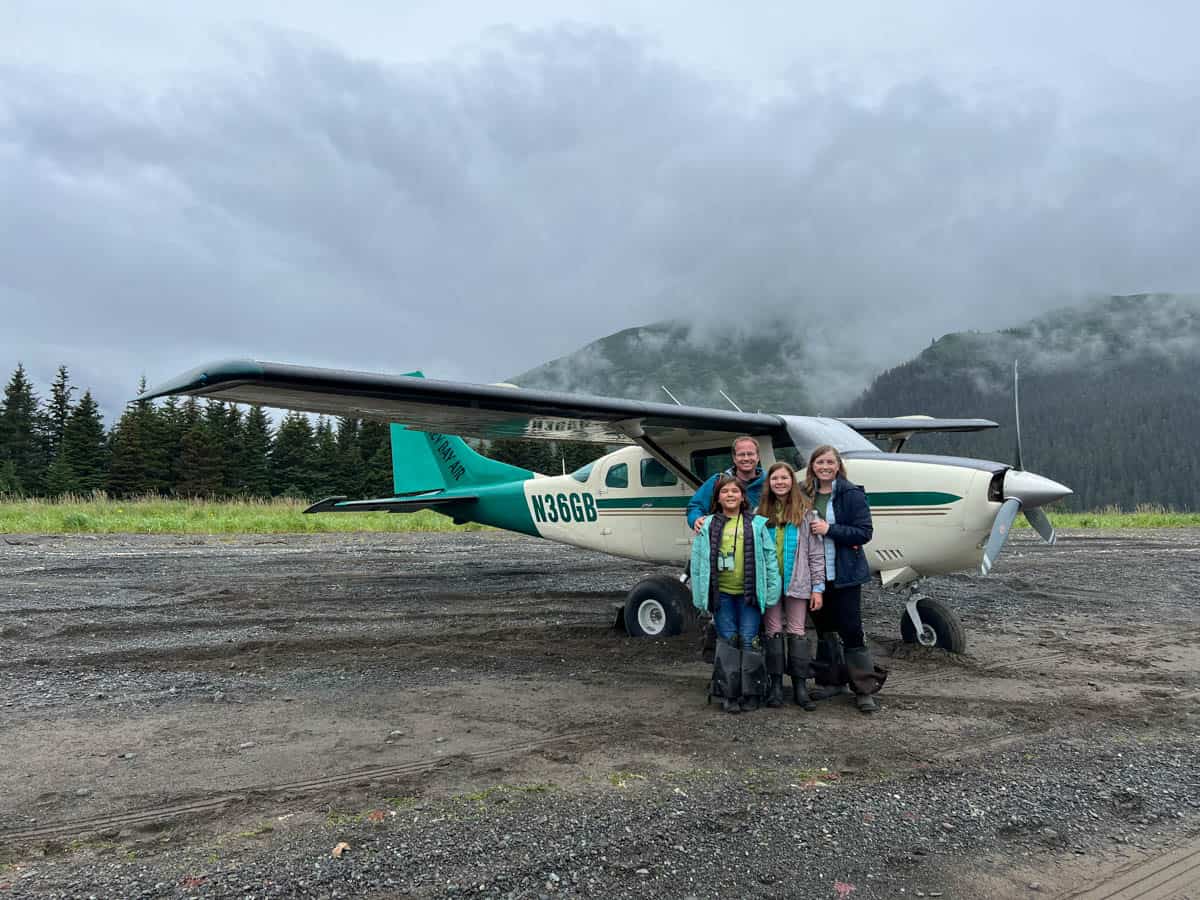
By Plane
We took a bush plane that landed right on the beach in Chinitna Bay. Bush planes are a big part of Alaska life since many areas of the state are only accessible by plane for a large part of the year, so this felt like a really authentic Alaska experience itself!
There are plenty of companies that will fly you to Lake Clark National Park. We went with Smokey Bay Air and they were fantastic, but Emerald Air Service, Northwind Aviation, Beryl Air, etc. etc. to name just a few.
You will get weighed before take off and your tour operator will provide you with wading boots, which comes in handy when you are trekking across mud flats to get closer to bears. There were a couple of times when we were literally above our knees in mud squelching our way over to an area where we could see a mother and cub were relaxing.

By Boat
Boats are a slower option and on the day we visited Lake Clark our flight was almost cancelled because of visibility, which isn't as much of an issue for boats. A down side though is that you typically get less time on the ground with the bears because of the longer travel time to get to and from Lake Clark from Homer by boat.
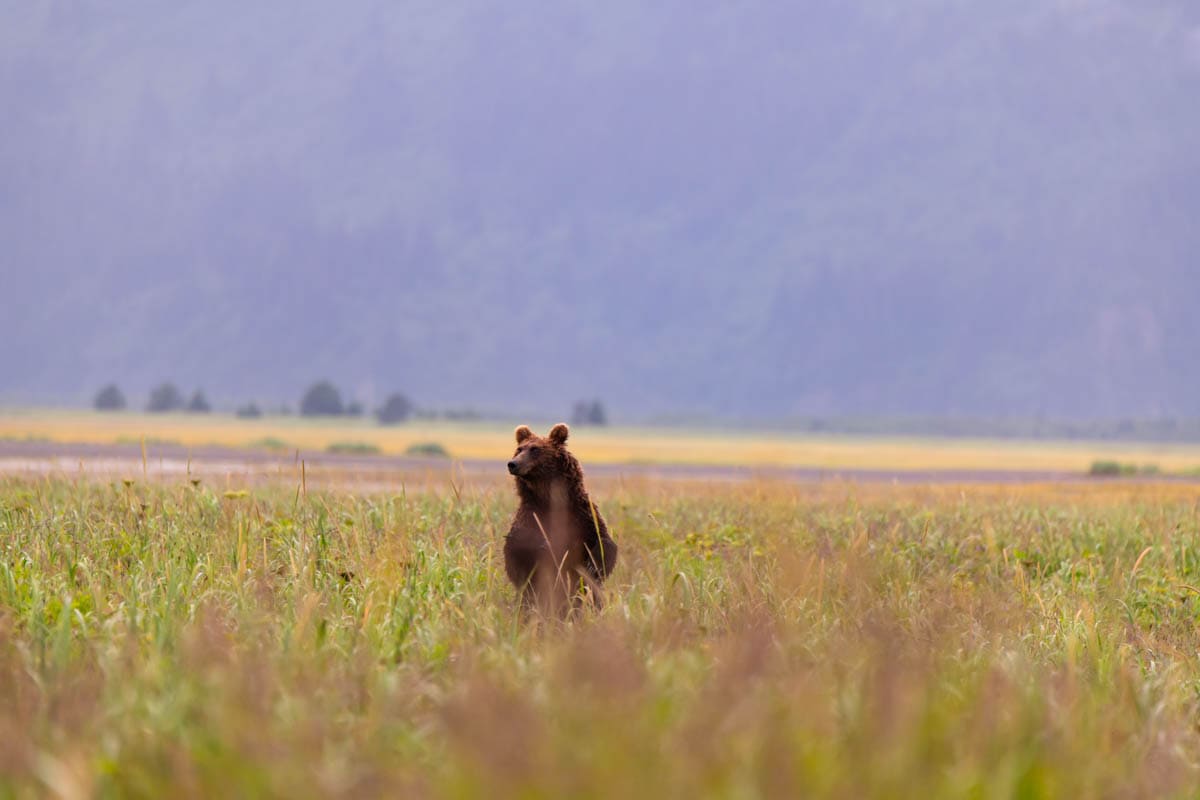
What You Can Expect to See
The pilots and guides will know where the bears are likely to be and will fly around looking for a good spot to land so you can have the best bear viewing experience. Once you land you will likely have a ½-mile walk to get closer to where the bears are.
Your guide will give plenty of instruction on how to behave around the bears, how close you can approach, and how to stand as a group to look bigger as a deterrent to the bears.
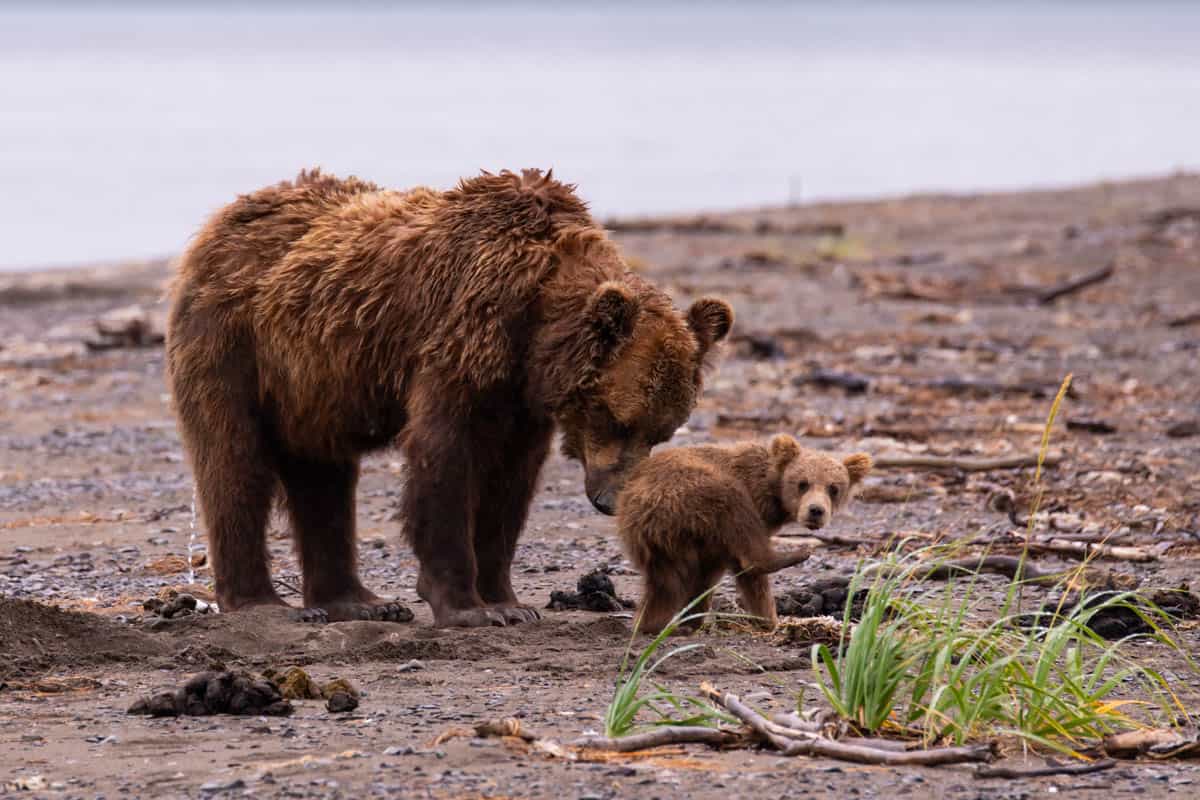
There were probably 2 dozen bears spread out across meadows, mud flats, and beaches during the 3 hours that we were there. Our guide told us that visitors are only allowed to get a certain distance from the bears and then stay put. If the bears amble closer towards you, then great, but you aren't supposed to press in closer towards the bears than what is safe.
Don't get so caught up looking for bears that you miss other interesting things like their massive paw prints in the mud flats or piles of clam shells or bear scat.
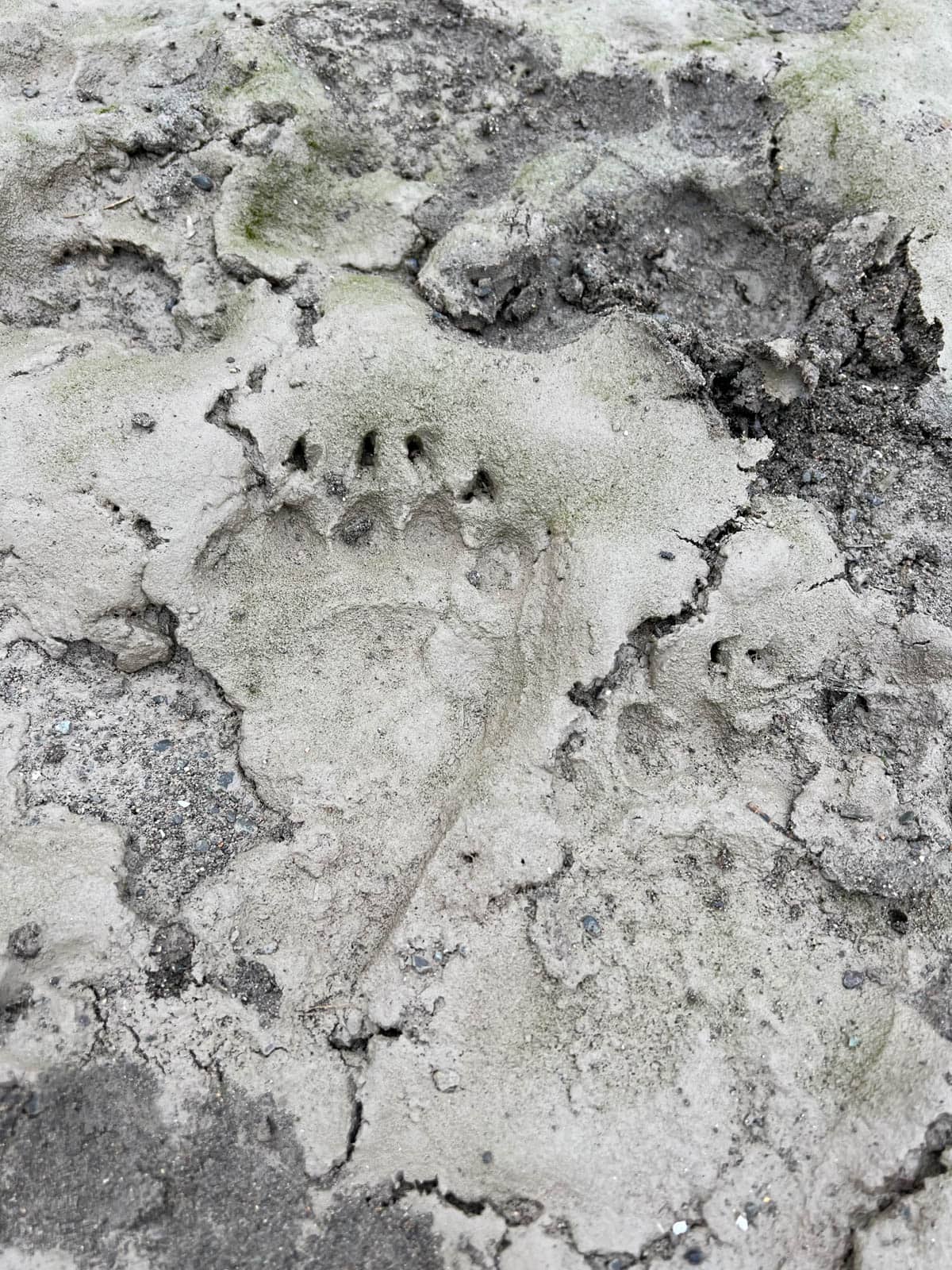
There is also a very good chance you will see eagles soaring around or perched high up in the trees. We even saw a fox nesting up in some rocks taking a nap.
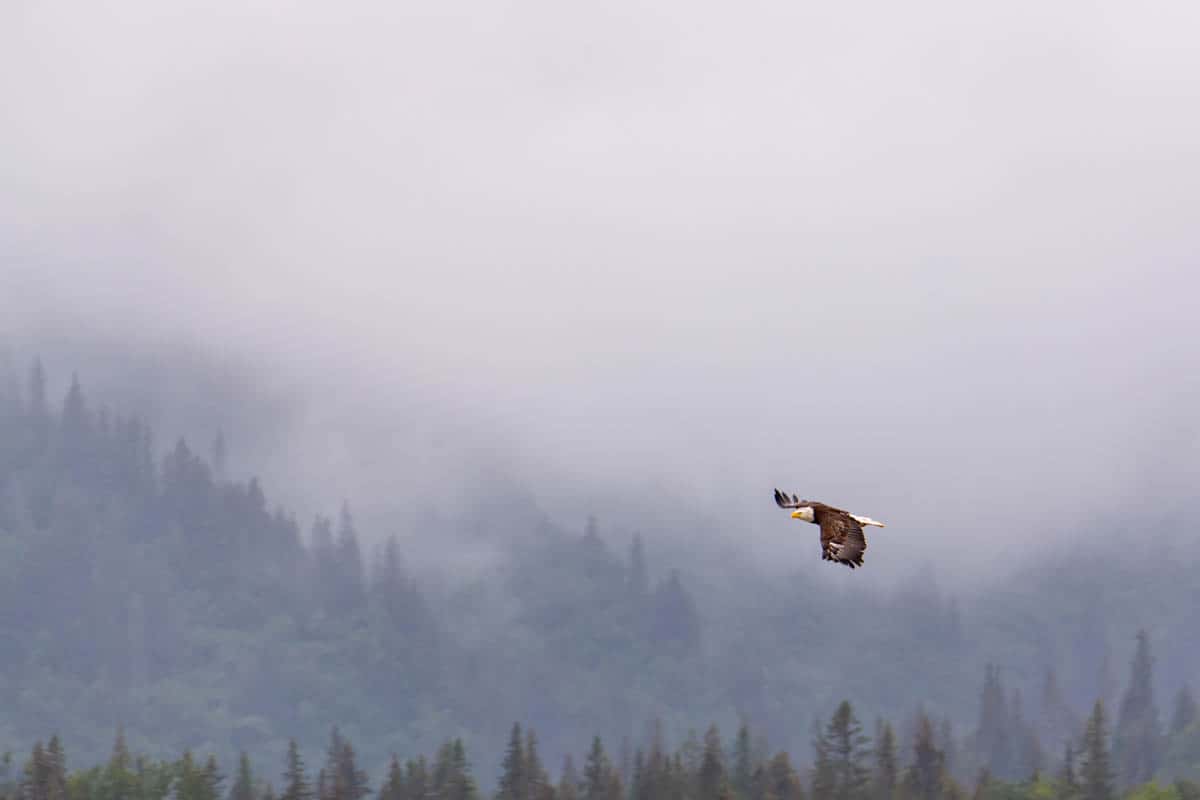

What kind of bears are in Lake Clark National Park?
You can find both black bears and brown bears in Lake Clark National Park, but the bears we saw were actually coastal brown bears which are the same species as grizzlies.
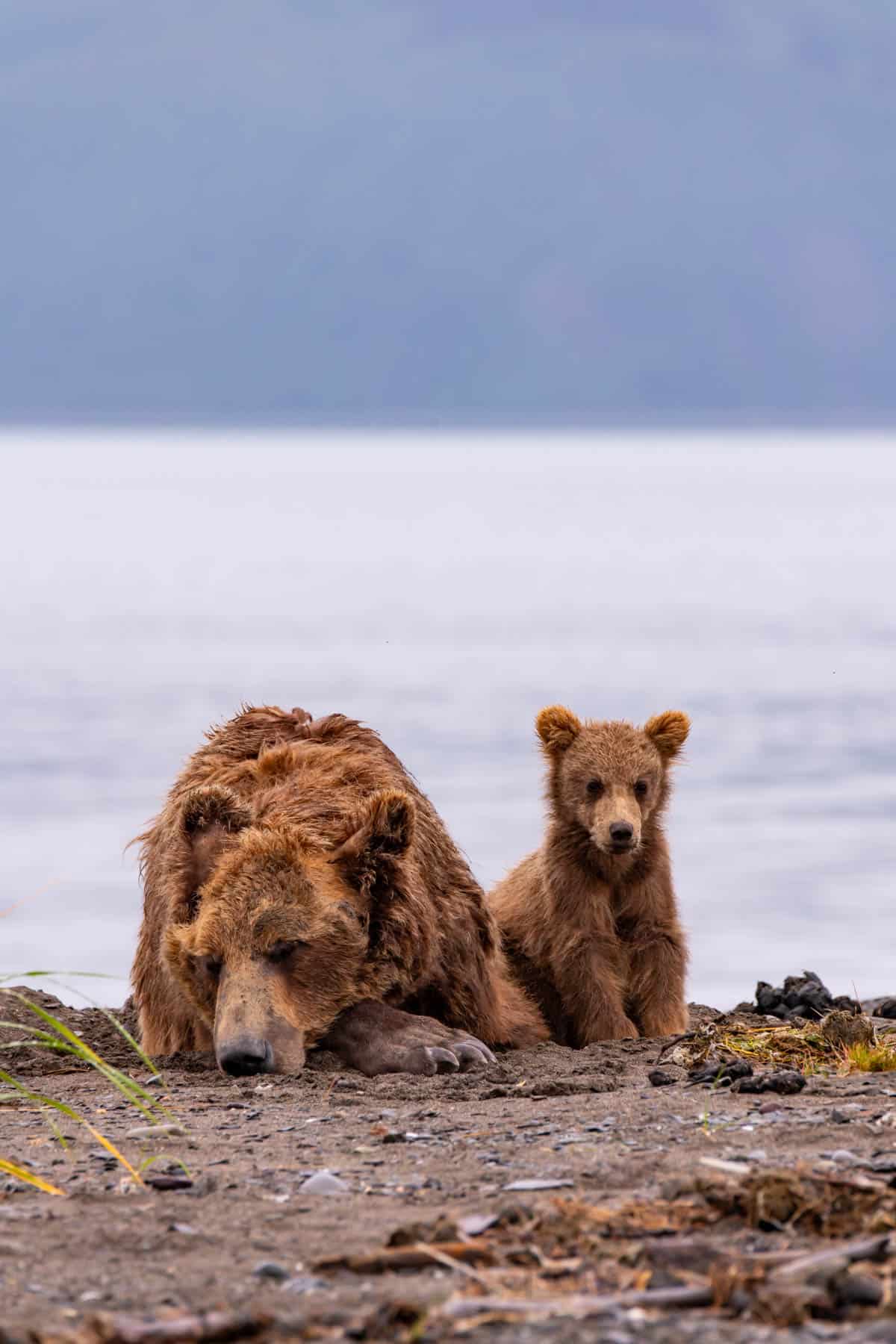
How much does it cost to go bear viewing in Alaska?
This activity is definitely not cheap and the cost depends on where you are leaving from and which operator you go with. At around $1,200 per person, it was easily the most expensive thing we did in Alaska. There might be less expensive tour operators, however, so you might want to shop around. We didn't book very far in advance and there was limited availability when we went so we took what we could get.
A boat trip to Chinitna Bay is a much more economical route if you want to see bears in Alaska but don't want to spend quite as much so you can do other things on your trip.

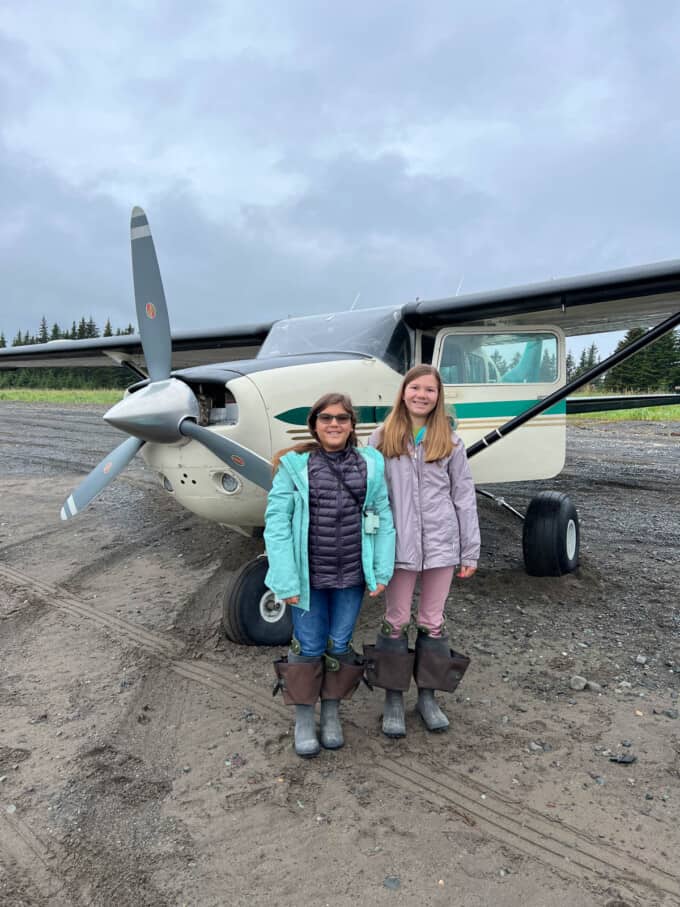
What should I bring?
Wear comfortable layers since the weather in Alaska can be unpredictable. Your footwear shouldn't be a big deal because the company you book with is likely to provide waders and any other necessary gear for you.
I definitely recommend bringing a good camera with a zoom lens if you are into photography and want the best pictures of bears. We used our phones for photos too, but we got especially lucky and a number of bears wandered pretty close to us which made it easy to get good photos.
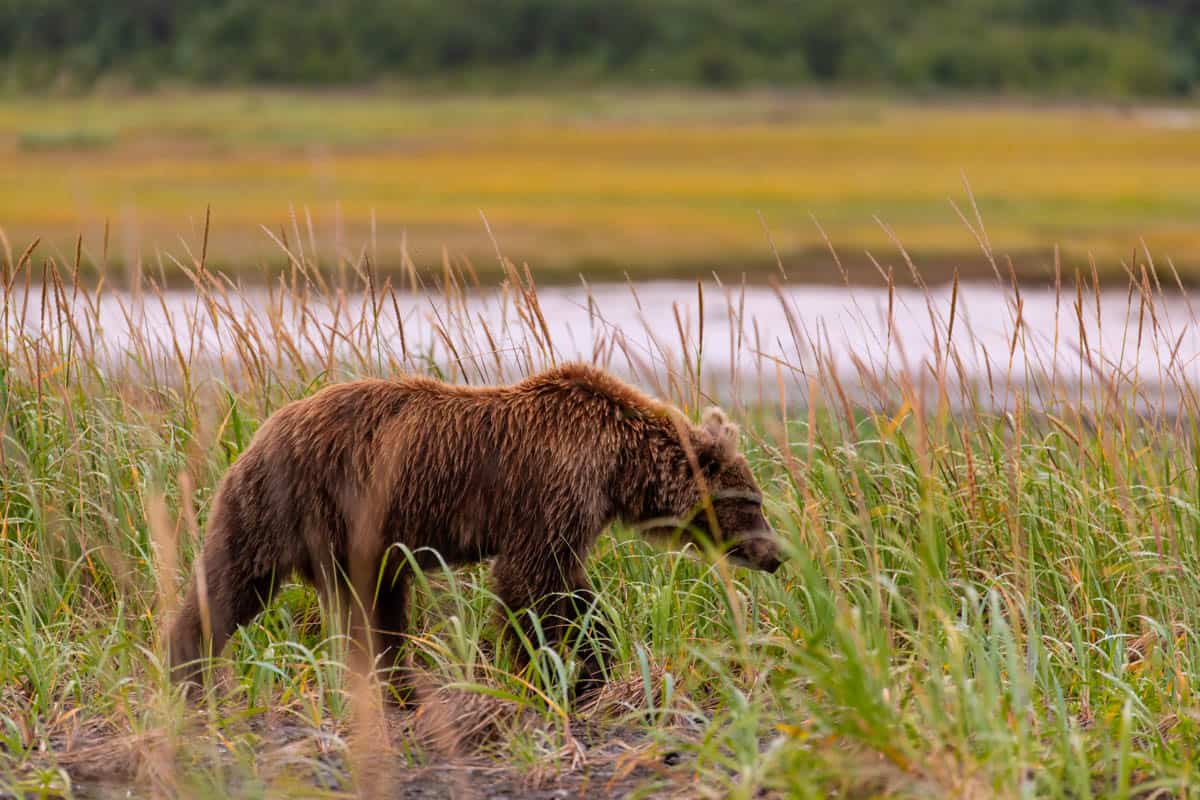
The thigh high wading boots we were provided were pretty comfortable and could be rolled down to make it easier to walk around. We only pulled them all the way up when we were going through a particularly deep section of water and mud, and we definitely needed the high since we were up over our knees at one point.
Your guide will also carry bear spray for the group so you shouldn't need to worry about bringing that with your to go bear viewing.
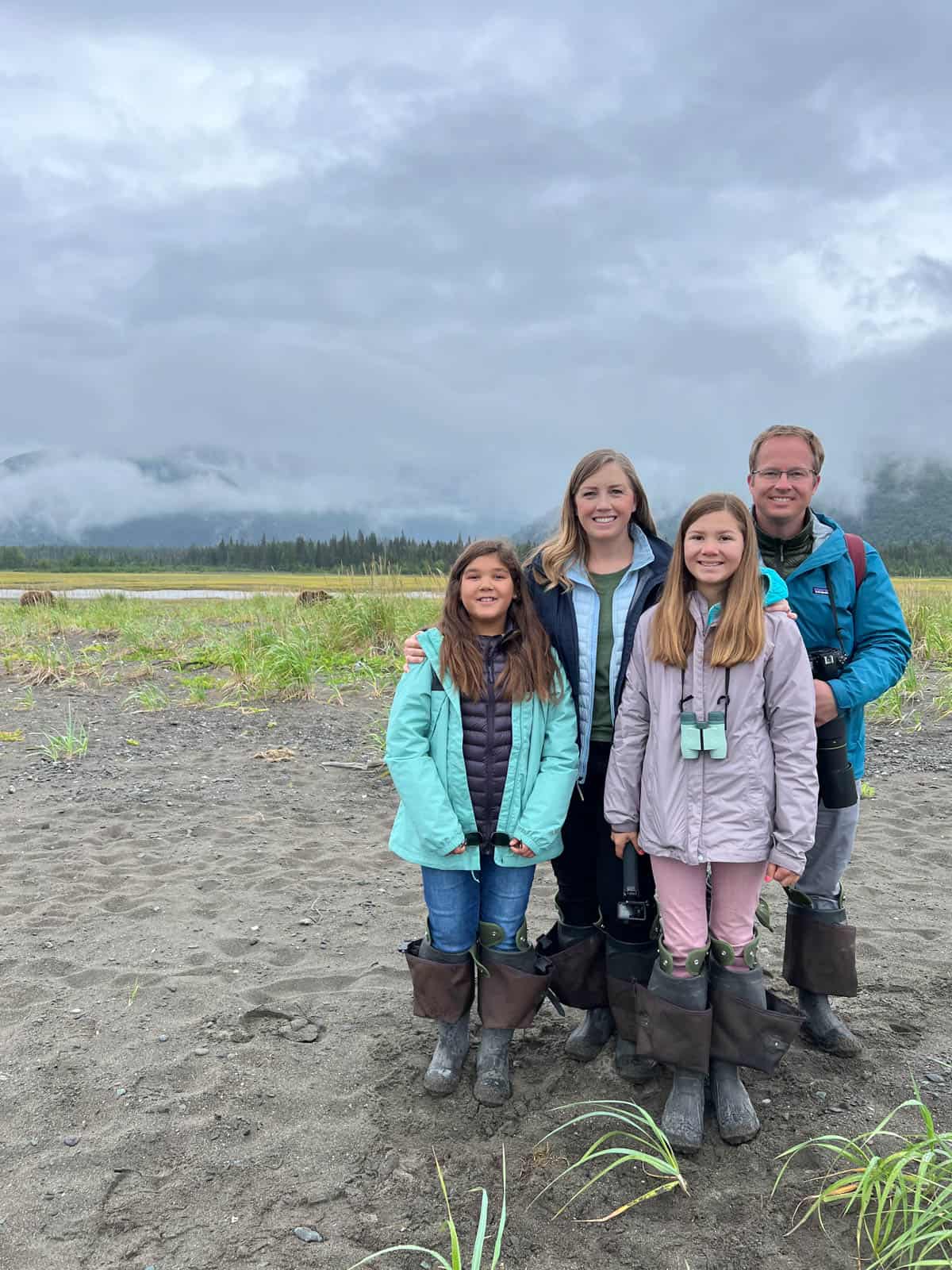
Other gear to consider bringing:
- Binoculars
- Camera with a long lens
- Water & snacks (it's a long excursion and you might want something on the flight back)
- Sunhat or rain jacket (depending on the weather)
Where can you see bears in Alaska?
There are two national parks just outside of Homer and to reach them, you will either need to fly via bush plane or sea plane or take a boat excursion to see the bears. The choice of which national park you will go to will depend on where the bears are, which changes over the year as the bears move from one area to another in search of food.
Lake Clark National Park has beaches and grassy meadows where you are likely to find bears digging for clams, eating the sedge grass that is high in protein, or just hanging out on the beach. Chinitna Bay is one of the best spots for bear viewing and you can frequently see up to 2 dozen bears in that area.
One of our most memorable scenes from that day was a bear chasing another bear way out on the muddy flats.

Katmai National Park
Nearby Katmai National Park is also world-renowned for its bear-viewing opportunities and depending on the time of year your air service might opt to take you to this national park instead.
Brooks Falls in Katmai National Park has one of the most iconic spot where bears gather in the river above short waterfalls and snatch salmon as they jump up the waterfalls. I'm sure you have seen the pictures on postcards, posters, and videos of Alaska.
But what you don't see is that there is a wooden viewing platform that only a certain number of people are allowed on at a time to watch the bears there. I'm definitely not discounting the experience and I would love to go there someday as well, but from what I understand and what our guide explained, it's less organic and wild feeling than Chinitna Bay or other spots in either national park where you can walk amongst the bears.
Hallo Bay is another popular place that some guide services will take you to for bear viewing. It is also in Katmai National Park and even more bears gather there - sometimes 30 to 40 bears - so it's another fantastic spot for being near the bears the coastal brown bears that call this place home.
McNeil River is another popular spot for visitors to be brought to spend time watching the bears go about their days.

When is the best time to go to see bears in Alaska?
The best bear viewing opportunities in this part of Alaska are from mid-May to mid-September. May and June is when you are more likely to see mating behavior while July and August are better for watching them catch salmon or dig for clams.
Bear in mind that weather in Alaska is unpredictable and even during the summer months you can never be sure that your flights will be able to go if there are stretches of rainy or overcast days.
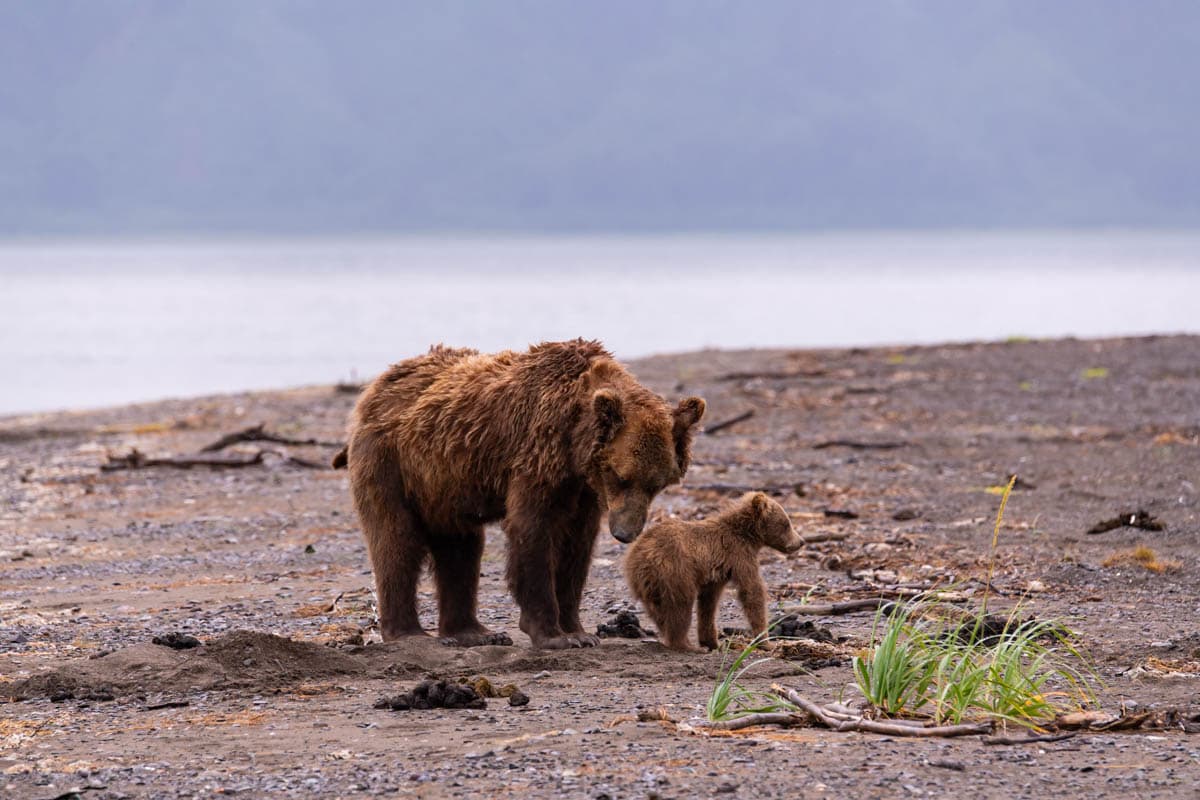
Is it safe?
We never felt unsafe even when we were quite close to the bears. The guides are experienced and take precautions, including keeping the group quiet since a main deterrent to bears is noise. By keeping groups small and quiet, the bears don't get used to human noises, so if it comes to it you can shout or yell at the bears if they start getting close as a way to make them back off.
The bears are also pretty calm this time of year since food is plentiful in this area and you see mostly mothers, their cubs, and juvenile bears, not the big male grizzly bears that can be more aggressive. Our guide explained that in most parts of the wild you would never see this many bears gathered in one spot, but because they are all more relaxed and there is plenty of food available here, it makes it so this many bears can gather without upsetting each other.

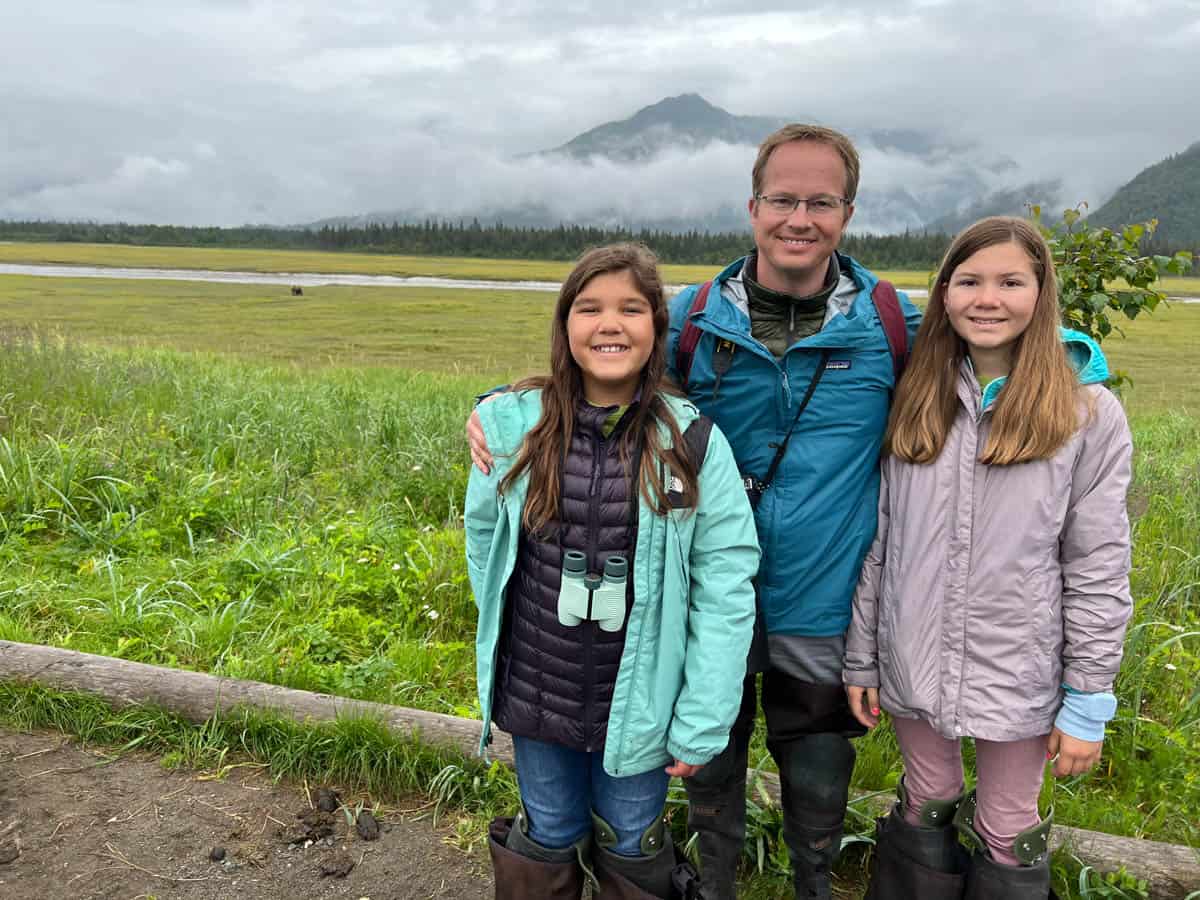
Can you stay overnight in Lake Clark National Park?
Yes, there are a number of options if you want to spend more time in Lake Clark. It's not a heavily developed area, but there are a number of all-inclusive lodges you can stay out with guided excursions so you have can more opportunities to see the rest of this expansive national park and do some hiking.
There are also some bed and breakfasts as well as overnight camping, if that's something you are interested in. We would love to go back and spend a few days enjoying this beautiful area on a future trip as we were just able to scratch the surface with this bear viewing excursion.
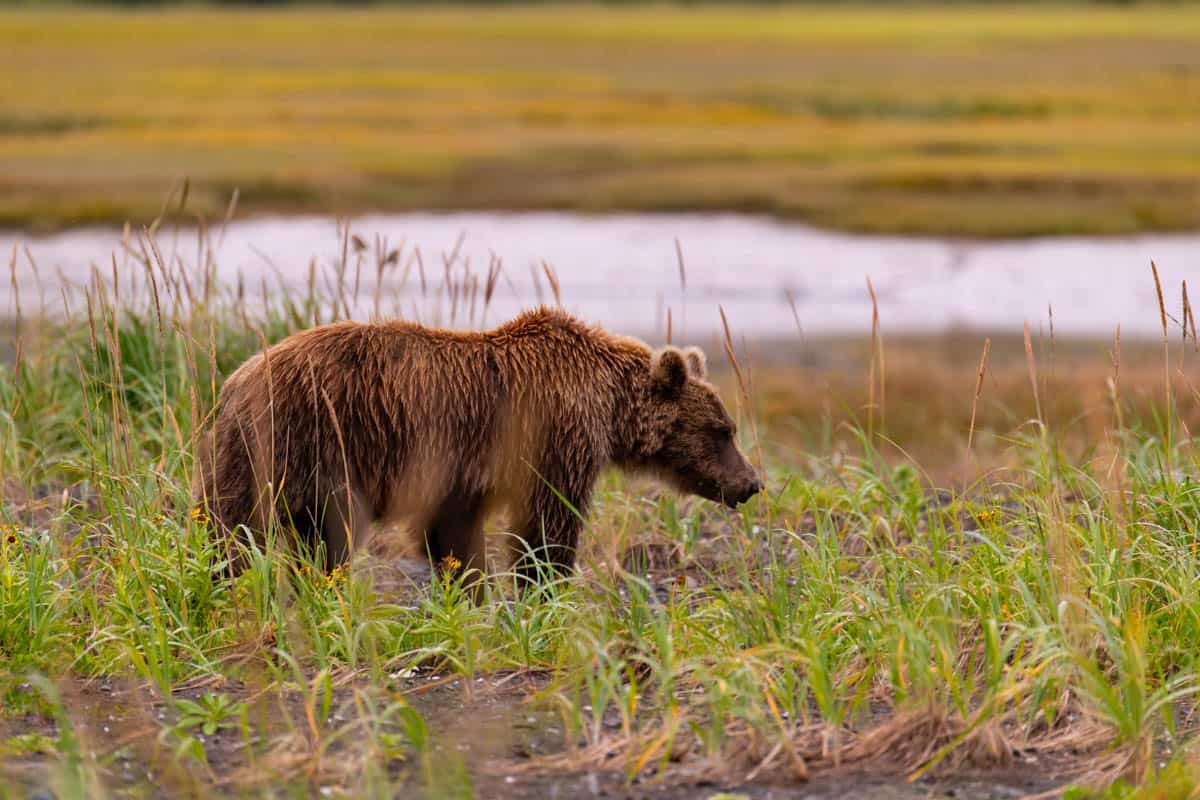
Where is the Lake Clark Visitor Center?
There is a visitor's center in Port Alsworth, which is a small community inside Lake Clark National Park. The visitor center is only open during the summer months from Memorial Day to Labor Day and can only be reached by plane or boat. It's not part of a typical tour so you would want to make separate arrangements if you want to visitor Port Alsworth and the visitor center there.
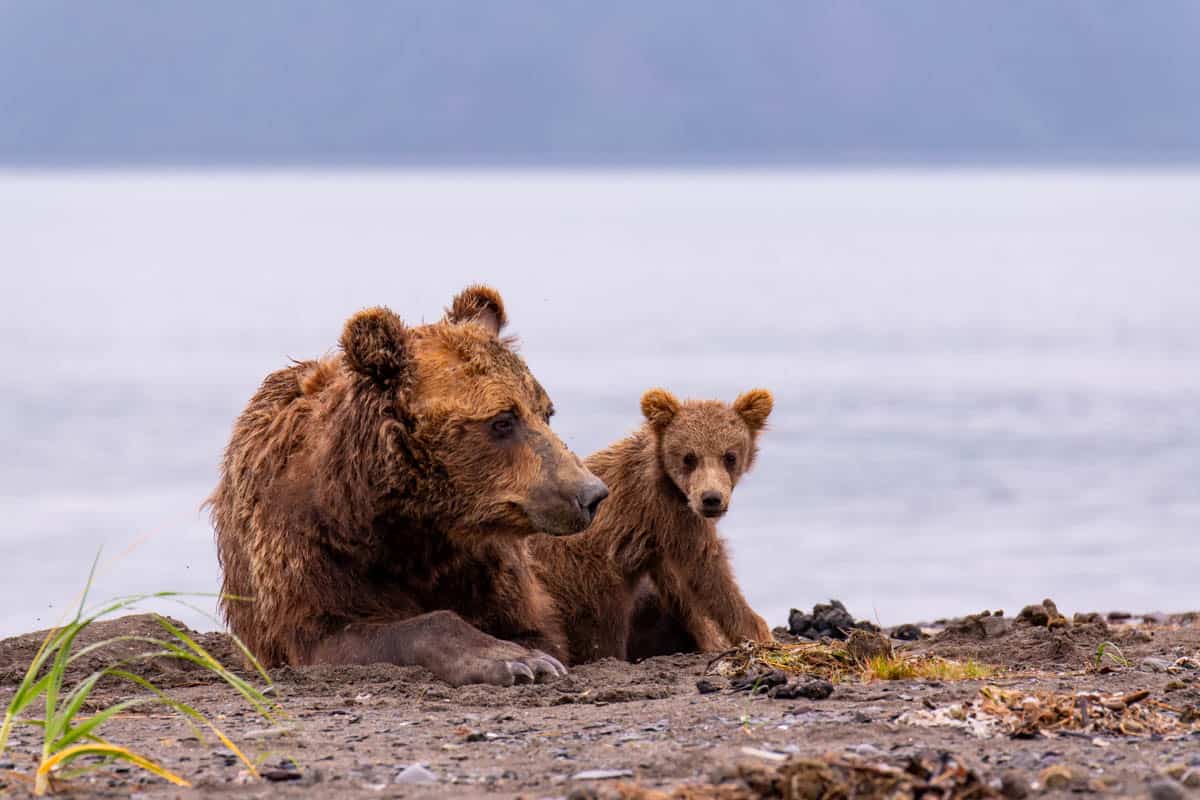
Other Things to Know
- Age Restrictions: Depending on your tour operator, there might be an age restriction for kids. We were in Alaska with kids but our girls were 9 and 12 so we didn't run into any issues. But some places require children to be at least 7 years old for a flight seeing excursion to see bears. I recommend reaching out to different operators and checking first, or consider staying at a lodge or bed and breakfast in the park itself if you have younger children.
- Bathrooms: There aren't outhouses or other facilities once you get to most of the bear viewing locations, so you will want to plan ahead and go before leaving on the plane.
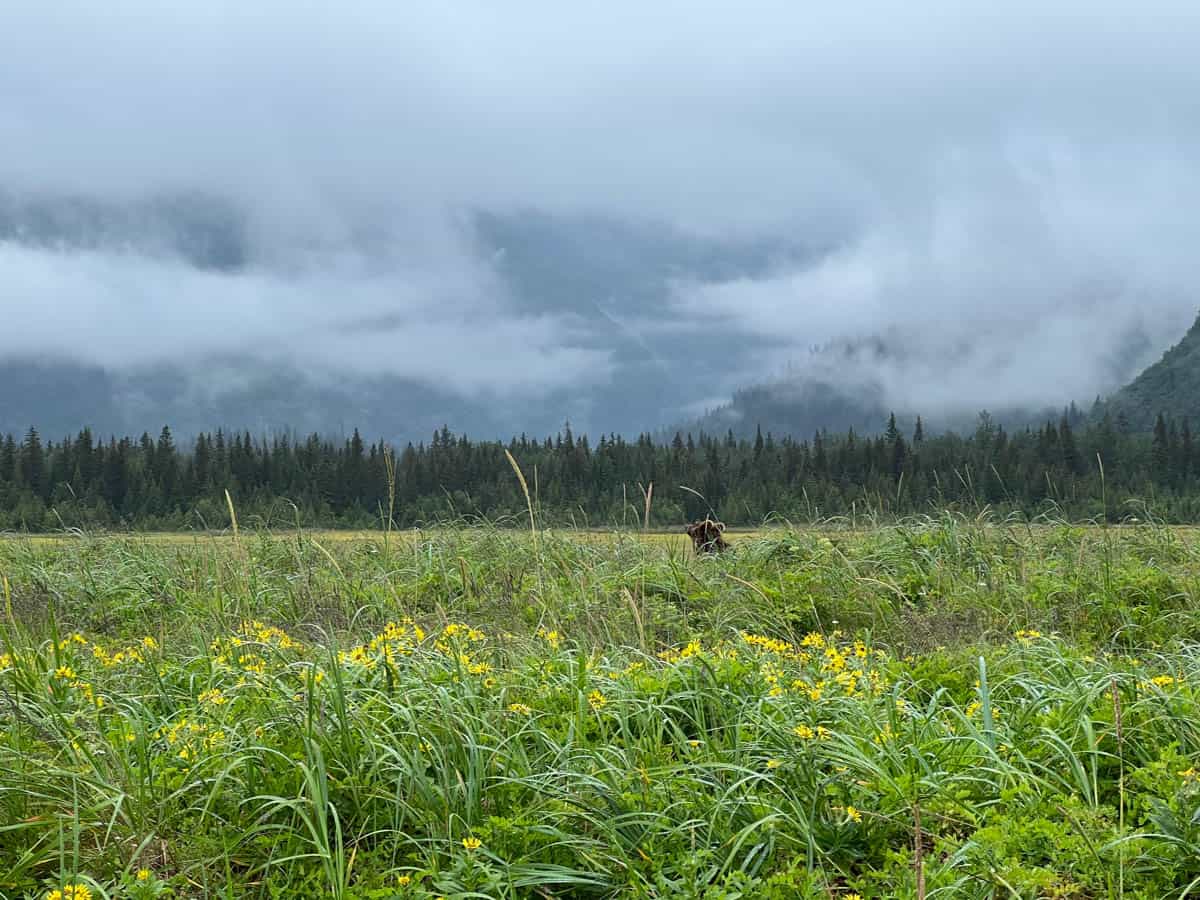

Other Activities in Lake Clark National Park
Whether you're an outdoor enthusiast, nature lover, photographer, or adventure seeker, there's something for everyone to enjoy in this remote and pristine wilderness area.
Lake Clark National Park and Preserve offers a wide range of outdoor activities besides bear watching. Some of these activities include:
- Hiking: Lake Clark National Park has plenty of hiking trails for all skill levels, from easy strolls to challenging backcountry treks. They let you explore the park's diverse landscapes of mountains, forests, tundra, and lakeshores.
- Backpacking and Camping: For those seeking a wilderness adventure, backpacking and camping are popular activities in Lake Clark. There are designated backcountry camping areas where visitors can immerse themselves in the remote beauty of the park. Permits are required for backcountry camping, and visitors should practice Leave No Trace principles to minimize their impact on the environment.
- Boating & Kayaking: There are lots of great opportunities for boating, kayaking, and canoeing in Lake Clark. Visitors can explore the park's waterways while enjoying stunning scenery and wildlife viewing opportunities.
- Fishing: Fishing is a popular activity in Lake Clark National Park, with opportunities to catch salmon, trout, char, and grayling. Anglers can fish from the shore, a boat, or designated fishing areas within the park.
- Wildlife Viewing: In addition to bear watching, Lake Clark National Park is home to moose, caribou, wolves, Dall sheep, and numerous bird species.
- Photography: Lake Clark National Park is a paradise for photographers, offering endless opportunities to capture stunning landscapes, wildlife, and natural phenomena such as the Northern Lights (aurora borealis) during the winter months.
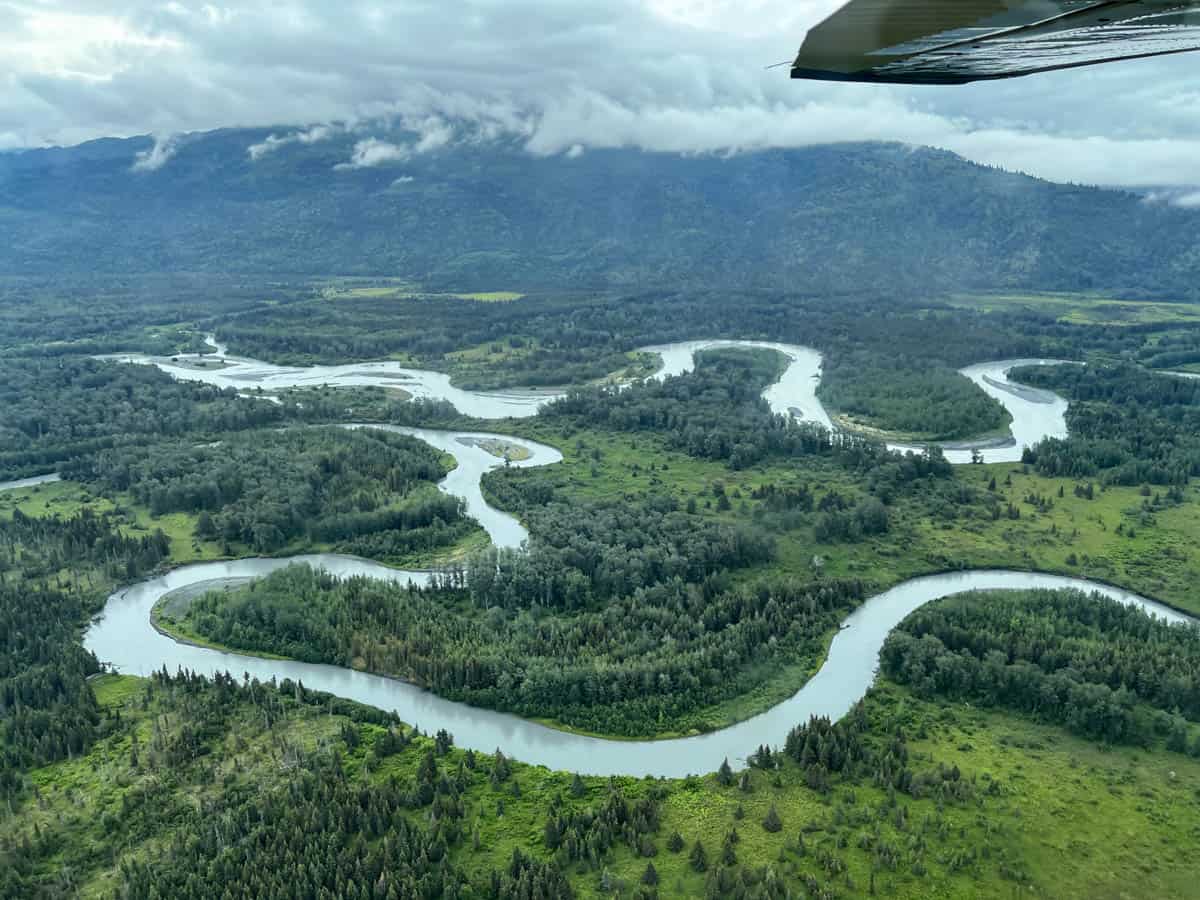
If you have visited Lake Clark or Katmai National Park, I would love to hear what your favorite experiences were in the comments below!
